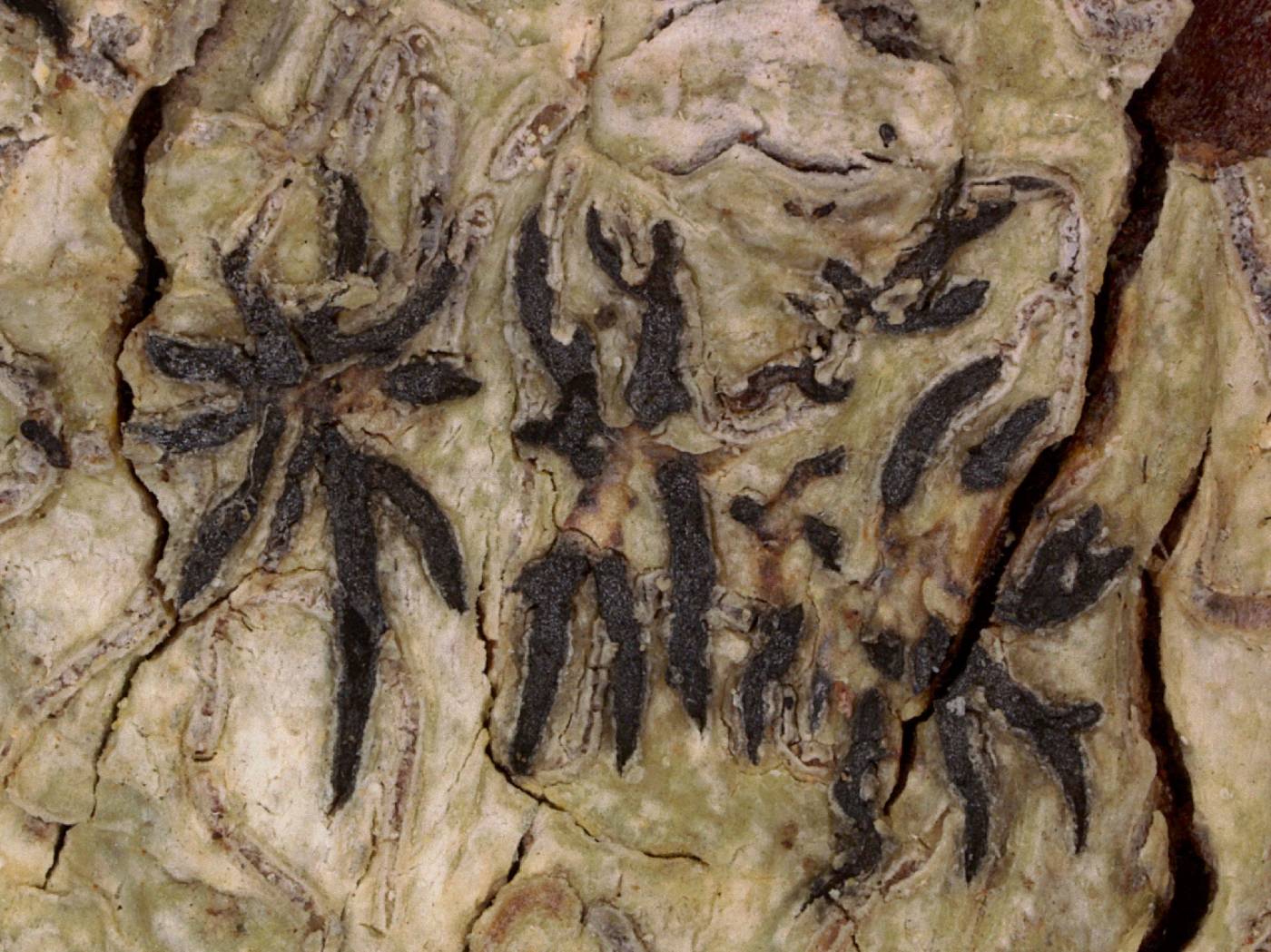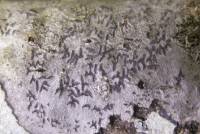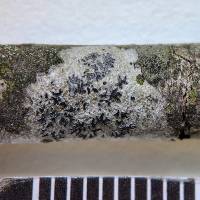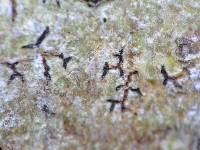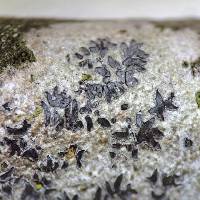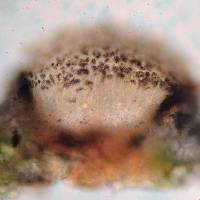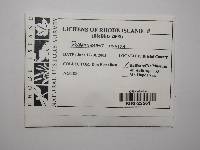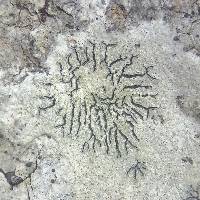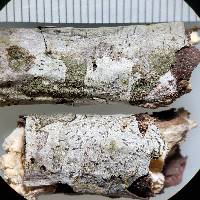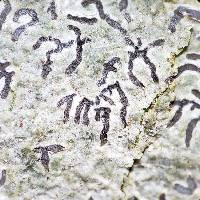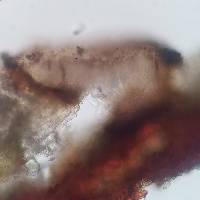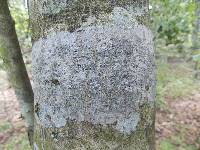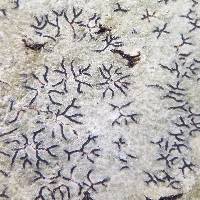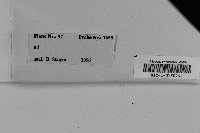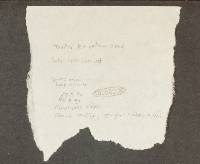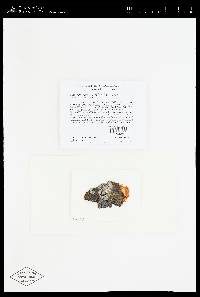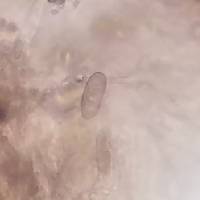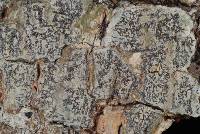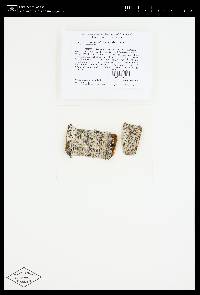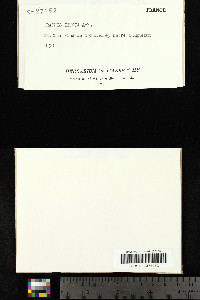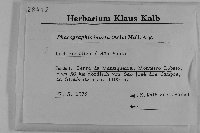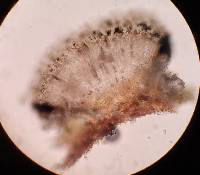
- Home
- Search
- Images
- Species Checklists
- US States: O-Z >
- US National Parks
- Central America
- South America
- US National Parks
- Southern Subpolar Region
|
|
|
|
Family: Graphidaceae
[Graphis inusta Ach., moreGraphis inusta var. emergens Vain. ex Van der Byl, Graphis inusta var. inusta Ach., Opegrapha inusta (Ach.) Tuck.] |
MB#400190 TYPE. CANADA. “Habitat in Canada ad corticem Prinos verticillatae [Ilex verticillata] a.b.m. Kalm olim ad nos transportatum” (Acharius 1814). P. Kalm s.n. (H H-ACH 0594, holotype; UPS BOT L-135272, L-000322, L-000324 isotypes). Description. Lichenized fungus. Thallus crustose, thin, continuous, whitish to pale green; vegetative diaspores absent; photobiont Trentepohlia alga. Ascomata lirellae, immersed, short to elongate and broad, straight, curved, rarely branched, 2-5 x 0.3-0.5 mm., often aggregated in substellate to stellate patterns. Disk expanded, slightly concave to flat, black or grey pruinose; margin inconspicuous, surrounded by a thin thalline margin; exciple apically carbonized; epithecium brown; hymenium hyaline, inspersed with oil droplets, 45-75 μm high; hypothecium thin, brownish black. Asci clavate, 8-spored. Ascospores bluish to brown at maturity, ellipsoid, 3-5-septate with lens-shaped cells, 16-25 x 6-9 μm. Chemistry. Spot tests all negative, secondary metabolites not detected. Substrate and Habitat. On smooth bark of hardwood trees, in forests. Distribution. Cosmopolitan (Europe, Asia, New Zealand, North and South America); in North Carolina found throughout. Literature Acharius, E. (1814) Synopsis Methodica Lichenum. Pp. 1-392 (original description as Graphis inusta). Benfield, B., B. J. Coppins & P. W James. (2009) Phaeographis Müll. Arg. (1882). Pp. 691-693 in Smith, C.W., A. Aptroot, B.J. Coppins, A. Fletcher, O.L. Gilbert, P.W. James & P.A. Wolseley (eds.). (2009) The Lichens of Great Britain and Ireland. The British Lichen Society, London. Fink, B. (1935) The Lichen Flora of the United States. University of Michigan Press, Ann Arbor. |
|
|
|

